Changchun Institute of Applied Chemistry, Chinese Academy of Sciences: Stereocomplex PLA Melt-Blown Nonwoven with High Stability
Polylactic acid (PLA) is a polyester polymer with lactic acid as the repeating unit, featuring excellent biodegradability. When discarded after use, it can degrade into water and carbon dioxide without causing environmental pollution. As a biodegradable and environmentally friendly polymer, PLA has broad applications in contemporary society, such as substituting for some traditional polymers in fiber materials. However, its limited stability and lower melting point restrict its usage in heat-resistant and durable application scenarios.
Polylactic acid (PLA) is a polyester polymer with lactic acid as the repeating unit, featuring excellent biodegradability. When discarded after use, it can degrade into water and carbon dioxide without causing environmental pollution. As a biodegradable and environmentally friendly polymer, PLA has broad applications in contemporary society, such as substituting for some traditional polymers in fiber materials. However, its limited stability and lower melting point restrict its usage in heat-resistant and durable application scenarios.
Poly(lactic acid) (PLA) is a polyester polymer with lactic acid as the repeating unit, featuring good biodegradability. When discarded after use, it can degrade into water and carbon dioxide without causing environmental pollution. As a biodegradable and environmentally friendly polymer, PLA is widely used in contemporary society, such as replacing some traditional polymers in the field of fiber materials. However, its limited stability and low melting point restrict its application in heat-resistant and durable scenarios.
Poly(lactic acid) (PLA) is a polyester polymer with lactic acid as the repeating unit, featuring good biodegradability. When discarded after use, it can degrade into water and carbon dioxide without causing environmental pollution. As a biodegradable and environmentally friendly polymer, PLA is widely used in contemporary society, such as replacing some traditional polymers in the field of fiber materials. However, its limited stability and low melting point restrict its application in heat-resistant and durable scenarios.
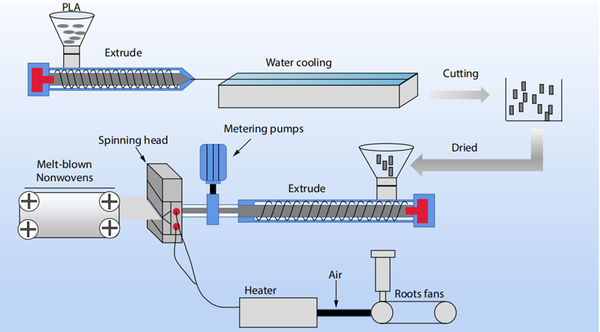

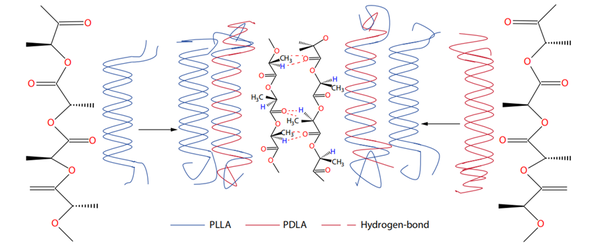

Figure 2 Schematic diagram of stereocomplex crystal formation.
Figure 2 Schematic diagram of stereocomplex crystal formation.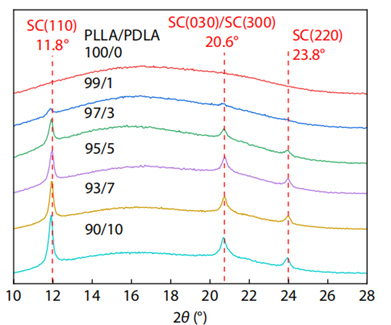

Figure 3 WAXD diffraction pattern of melt-blown nonwoven fabric.
Figure 3 WAXD diffraction pattern of melt-blown nonwoven fabric.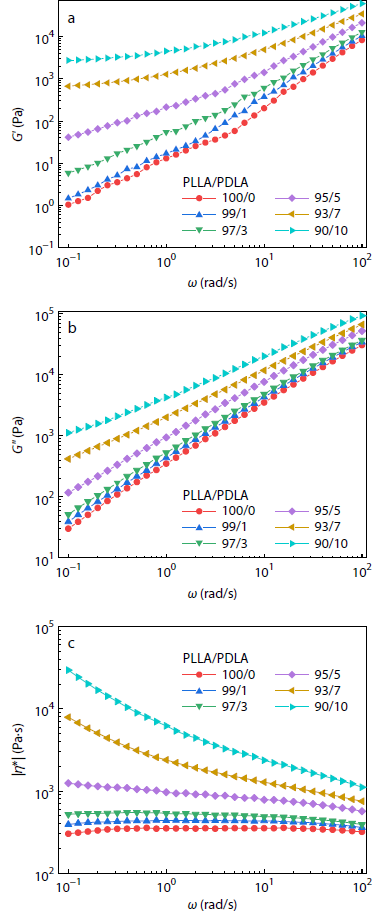

Figure 4 (a) Storage modulus (G'), (b) loss modulus (G''), and (c) complex viscosity (|η*|) of the PLLA/PDLA blend.
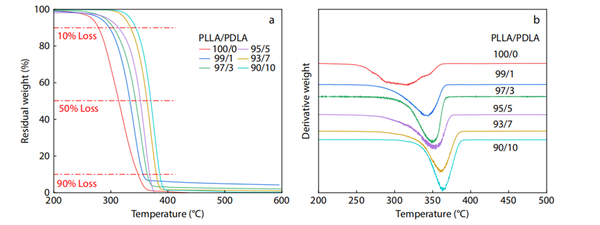

Figure 5 Thermogravimetric curves of polylactic acid melt-blown nonwoven fabric.
Figure 5 Thermal weight loss curve of polylactic acid meltblown nonwoven fabric.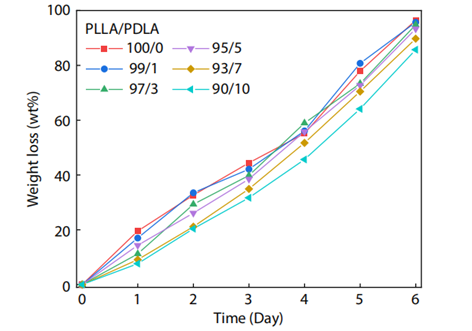

Figure 6 Enzymatic degradation weight loss curve of polylactic acid meltblown nonwoven fabric over time.
Figure 6 Enzymatic degradation weight loss curve of polylactic acid meltblown nonwoven fabric over time.This study provides an effective strategy for obtaining and large-scale preparation of high-performance polylactic acid meltblown nonwoven fabric. The prepared environmentally friendly polylactic acid meltblown nonwoven fabric exhibits excellent thermal stability and resistance to degradation, promising to expand the application of PLA materials in areas such as packaging, filtration, and medical fields. In the future, the research team will further explore methods to optimize material performance, promote the wider application of PLA materials across more industries, and contribute to sustainable development.
This study provides an effective strategy for obtaining and large-scale preparation of high-performance polylactic acid meltblown nonwoven fabric. The prepared environmentally friendly polylactic acid meltblown nonwoven fabric exhibits excellent thermal stability and resistance to degradation, promising to expand the application of PLA materials in areas such as packaging, filtration, and medical fields. In the future, the research team will further explore methods to optimize material performance, promote the wider application of PLA materials across more industries, and contribute to sustainable development.
【Copyright and Disclaimer】The above information is collected and organized by PlastMatch. The copyright belongs to the original author. This article is reprinted for the purpose of providing more information, and it does not imply that PlastMatch endorses the views expressed in the article or guarantees its accuracy. If there are any errors in the source attribution or if your legitimate rights have been infringed, please contact us, and we will promptly correct or remove the content. If other media, websites, or individuals use the aforementioned content, they must clearly indicate the original source and origin of the work and assume legal responsibility on their own.
Most Popular
-

List Released! Mexico Announces 50% Tariff On 1,371 China Product Categories
-

Nissan Cuts Production of New Leaf EV in Half Due to Battery Shortage
-

New Breakthrough in Domestic Adiponitrile! Observing the Rise of China's Nylon Industry Chain from Tianchen Qixiang's Production
-

Dow, Wanhua, Huntsman Intensively Raise Prices! Who Controls the Global MDI Prices?
-

Mexico officially imposes tariffs on 1,400 chinese products, with rates up to 50%






